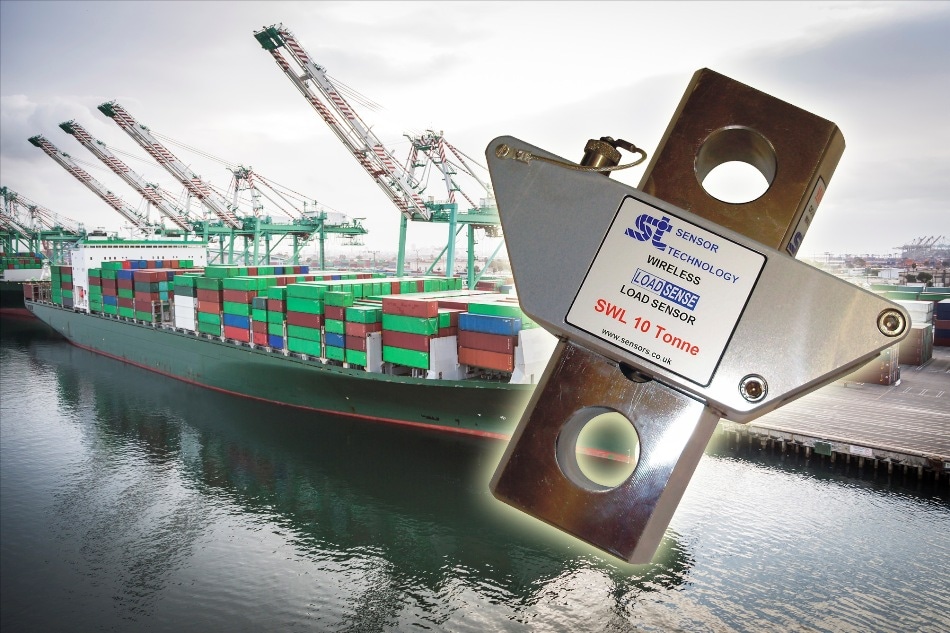New wireless control technologies are being adopted by manufacturers and users of cranes and other lifting equipment. Tony Ingham of Sensor Technology Ltd explains the advantages and looks at how the field is developing.

Most of us find it odd to look back five or ten years to when our home computers were tethered to the wall by a cable. Somehow we just accepted that the cable restricted the mobility of the device and lived with that limitation. Now, of course, it is completely normal to pull a mobile phone out of your pocket and dial up the internet so that we can look up obscure information, book tickets or connect with a computer many miles away.
In the industrial and commercial arenas, wireless technology has revolutionised many practices. Logistics companies now routinely track the progress of every single parcel in their charge; field engineers collect data from and send instructions to remote facilities such as water pumping stations; customer accounts can be updated in real time, etc.
However, there is another aspect to wireless technology that is less obvious to the general public, but which engineers and technicians are really coming to appreciate. This may best be described as ‘local wirelessness’ or ‘wireless LANs (local area networks)’. Basically these remove to the need to install and maintain wiring for control equipment fitted to machinery such as cranes, hoists, lifts and elevators.
Control technology is essential to many modern industries, as it is the only practical way to ensure reliable operation and high efficiency.
Handling products through a busy working environment whether it is a container port, manufacturing plant, warehouse, logistics centre or retail outlet involves making sure that materials handling is rapid, accurate and safe. This requires a control system that can handle huge amounts of data in real time, can safely operate heavy duty machinery, and if necessary withstand extremes of climate and environment. Further, as many operations now run 24x7 there are likely to be immediate consequences to breakdowns and other stoppages, meaning control equipment has to be robust and reliable.
However the basic principles of a control system are relatively simple. The rotation of drive shafts in the various cranes and other machinery can be used to collect load and movement data on each item being moved. Each turn of the shaft will progress the equipment’s operation forward or backward a small but consistent amount, and if you can also measure the torque (rotational strain) in the shaft you can calculate the weight of the load being transferred.
This raw data stream can be used to easily calculate operational information such as the amount of goods or product moved, the time to completion of each operation, and the destination of each load. It is also equally easy to convert this operational data into commercial information and safety reports that include cumulative operating hours, total load lifted and other statistics.
In the past taking measurements from drive shafts has been difficult, but TorqSense from Sensor Technology of Banbury, UK provides a perfect solution. Previously, it was necessary to install sensors in difficult to access parts of industrial machinery and wire them back into the communication network that connected with a computer for collecting and interpreting the data. And once installed, the wiring had to be protected from damage and replaced if it failed.
However TorqSense gets around this by using radio transmissions instead of wiring. Further, old fashioned torque sensors tended to be delicate because they needed a fragile slip ring to prevent the turning drive shaft from pulling the wiring out of place, whereas TorqSense uses a wireless radio-frequency pick-up head that does not need physical contact with the rotating shaft.
A practical attraction of TorqSense is that its wirelessness makes it ultra-simple to install and robust in use. Furthermore it is largely unaffected by harsh operating environments, electromagnetic interference, etc. It is equally at home measuring coal on a conveyor, working on a dockside crane weighing and counting containers or in any other lifting application.
TorqSense is proving popular with an increasing number of users across many fields - not only in lifting, but also in robotics, chemical mixing and automotive applications - almost anywhere that uses machinery with rotating drive shafts.
Sensor Technology has also developed a complementary range of sensors, which measures the straight line equivalent to torque. Called LoadSense, this too uses a wireless radio frequency pick-up to collect data signals from the sensing head and transmit them wirelessly to a receiving computer for analysis.
It is notable, that both TorqSense and LoadSense can be used in a fully wireless mode, but equally can be fitted into conventional cabled systems, so is easy to retrofit into existing control systems.
It is also interesting to know that LoadSense was actually developed at the behest of a particular customer, a helicopter pilot who wanted real-time and exact information about the weight of loads he was carrying from an underslung cargo hook. The issue for him was that he would invalidate his helicopter’s certificate of airworthiness if he drilled a hole in the fuselage for a cable, so he had to have a wireless solution. This application also required very robust hardware that could withstand heat and cold, extreme movements and shock loads and be unaffected by motor noise, radio interference etc – all characteristics that translate well into fields such as lifting, conveying and cranage.
TorqSense, LoadSense, wireless data transfer and communications are making an increasing contribution to the development of materials handling technologies. While they are ‘invisible’ to the casual observer, they have the capacity to revolutionise many aspects of lifting operations and to drive efficiency, reliability and safety to new levels.